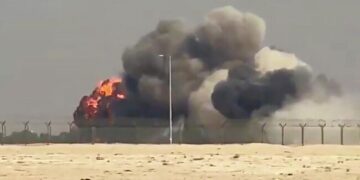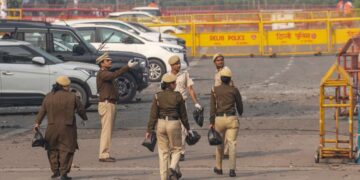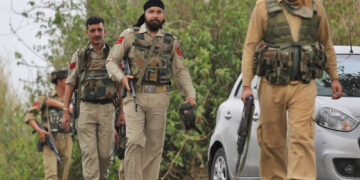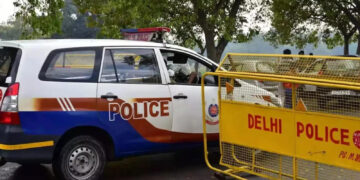
Bharat Bandh 2025: India witnessed large-scale disruption in public services and transportation today as nearly 30 to 40 crore workers and farmers took part in the Bharat Bandh, a nationwide general strike called by 10 major central trade unions (CTUs). The Bharat Bandh protest, aimed at challenging the central government’s labour and economic policies, impacted railways, roads, banking, and local transport across several states including Kerala, West Bengal, Bihar, and Odisha. The Bharat Bandh 2025 is being seen as one of the most significant labour uprisings in recent years.
Why Are Workers Protesting?
The protesting unions have presented a 17-point charter of demands during the Bharat Bandh, targeting labour law amendments, increasing job opportunities, and strengthening social security. Key concerns include:
-
Repeal of four new labour codes, which unions say dilute workers’ rights
-
Rising unemployment, especially among youth aged 20–25
-
Privatization of public sector undertakings (PSUs)
-
Increase in MGNREGA wages and workdays
-
Creation of urban employment guarantee schemes
-
Opposition to hiring of retired officials over young professionals in government sectors like Railways and Steel
Union leaders argue that the Bharat Bandh is not just about labour reforms but also about demanding accountability for the growing economic inequalities and shrinking job opportunities. They have criticized the government’s failure to conduct meaningful discussions and allege that tripartite institutions like the Indian Labour Conference have been systematically sidelined.
Public Transport Disrupted in Key States
The Bharat Bandh had a tangible impact on public mobility across India. In Odisha, members of the Centre of Indian Trade Unions (CITU) blocked the Bhubaneswar national highway. Similar protests were held across West Bengal, where train services were disrupted as protesters blocked railway tracks at multiple locations, including Jadavpur.
In Bihar, members of student unions affiliated with the Biju Janata Dal blocked railway tracks at Jehanabad station. Reports from several states including Tamil Nadu, Punjab, Maharashtra, and Andhra Pradesh highlighted reduced public movement due to bus driver strikes and union-backed rallies.
From Kolkata to Kochi, life was thrown out of gear. In Kerala’s Ernakulam district, normalcy was hit as shops and markets downed shutters and private buses remained off roads. Public transport services were either completely halted or ran at reduced frequency as a result of the Bharat Bandh.
Government’s Stand and Union’s Allegations
The Union Labour Ministry has stated that it is willing to hold discussions but has claimed that 213 unions, including the RSS-affiliated Bharatiya Mazdoor Sangh (BMS), have refused to participate in the Bharat Bandh. However, the CTUs argue that tripartite mechanisms such as the Indian Labour Conference have been “undermined” and that the Centre is trying to intimidate and suppress workers’ rights.
Union leaders allege that several government departments, including Railways and NMDC Ltd, are hiring retired personnel rather than creating opportunities for the youth. With India’s unemployment rate highest among the 20–25 age group, and over 65% of the population under 35, they argue that the Bharat Bandh sends a warning signal on the country’s growing employment crisis.
Banking and Public Services Affected
Although July 9 is not a public holiday, banking operations in some regions were affected due to the participation of unionized bank staff in the Bharat Bandh. An association of bank employees confirmed that some branches would remain closed in solidarity.
-
Stock markets operated normally, with no scheduled trading holiday
-
Schools and government offices were mostly open, but attendance was low in areas where transport was affected
-
Local markets in major cities such as Delhi, Mumbai, and Bengaluru witnessed partial closures
In West Bengal, despite a visible police presence near Jadavpur 8B bus stand, buses continued to run, though many drivers were seen wearing helmets for safety amid the tense atmosphere created by the Bharat Bandh.
Long History of Protest Movements
This is not the first time central trade unions have staged such a protest. Similar nationwide strikes were observed in 2020, 2022, and 2024, focusing on public sector privatisation, job insecurity, and the weakening of labour laws. Union leaders emphasise that the 2025 Bharat Bandh is a continuation of a broader struggle to protect India’s working class from exploitative reforms and marginalisation.
Looking Ahead: Will Dialogue Prevail?
As the Bharat Bandh gains momentum and nationwide participation increases, pressure mounts on the government to initiate genuine dialogue with workers’ unions. The CTUs have made it clear that without immediate action and policy change, further protests and strikes could follow.
For now, India’s working class has sent a strong and united message—calling for equitable growth, job creation, and the preservation of workers’ rights. Whether the Centre chooses to respond with reform or resistance will shape the path forward.

















